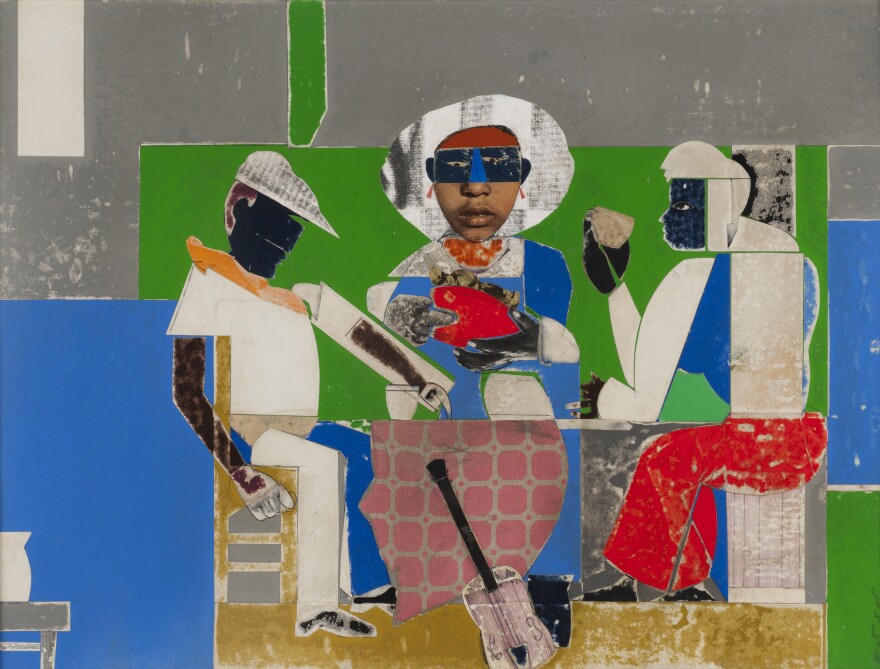The Munson Williams Proctor Art Institute in Utica wraps up its exhibit of African American artist Emma Amos later this month. The exhibit, Emma Amos: Color Odyssey goes along with a larger effort by the museum to show the works of diverse artists. Members of the public helped with the exhibit to further bring the community into the museum.
Marques Phillips was one of the people asked to be part of the exhibit. He remembers teachers helping to pay for his art lessons when he was a kid at Munson Williams, and now was asked to share his perspectives on some of the works by diverse artists.
“So to be asked to comment on, or to have some say over what hangs on these walls, just reminded me of that 11-year-old kid that was in here learning from people to paint, and it made me grateful for everything that Munson Williams and the community at large have done for me.”
Marques and other members of the community helped select the works to be show in Call and Response: Collecting African American Art to highlight some of the museum’s collection from the past 30 years. They were also asked to share observations and reactions to the works to offer any visitor a different perspective.
April Oswald, the museum’s Education Director wanted to find a way to bring a better understanding – a better experience of the works – to the visitor.
“Each person has a very different perspective and comes from rather different backgrounds. Sometimes there is an understanding (of a work); maybe it’s art-based or experience-based, just as the artist themselves, where they’re coming from.”
Someone observing the various paintings, sculptures and other works can hear via smartphone comments and perspectives that lend that experiential dimension. The title – Call and Response, spoke to another community contributor, The Reverend Sharon Baugh. For her, call and response is part of her church services, to represent god’s call and the faithful’s response.
“These images do the exact same thing. They call to you. You have an inward, spiritual connection with what you see and that’s how you respond.”

Baugh was particularly moved by the transformation of some of the works of art.
“The objects where they took actual slave pieces in metal and made sculpture out of them. And it just reminded me that out of the crucible of something very horrendous … including COVID, beauty can emerge.”
She even associates it with George Floyd’s murder and the attention – and transformation - that came out of that tragedy.
Call and Response was presented in conjunction with the traveling exhibit Emma Amos: Color Odyssey. Museum Curator Mary Murray explains Amos’s important voice was not often displayed in prominent museums. Amos’s work evolved from abstract to more figure painting to works that incorporated a lot of color and movement.
“Her work (became) consistently about figures and she is both feminist and civil rights informed. Her work is very much about speaking about issues of power relationships, women, and women of color.”

The Amos exhibit and the Call and Response program bringing the community closer, Murray says, place the museum in the center of relevant societal issues – on which she suggests the museum can have an impact.
“This growing awareness that museums aren’t neutral is part of being more sensitive to the situations that create that kind of mistrust that leads to violence because there’s not good communication.”
Both Murray and Oswald are trying community and school programs to bring more people into the museum and chip away at barriers they know exist to certain types of culture.
“One thing I think that would be hard for people to understand unless they’re here is how much a part of the culture of the city Munson Williams is,” Phillips adds. “And we want to make sur that everybody in Utica, whether they’re from disadvantaged communities or well-off communities, gets to participate in all the culture our city has to offer.”
This effort is part of Munson Williams’ 5-year plan to diversify its programming, exhibits and audiences. The Emma Amos exhibit runs through September 12th and then travels to Philadelphia. Call and Response: African American Art runs through November.



